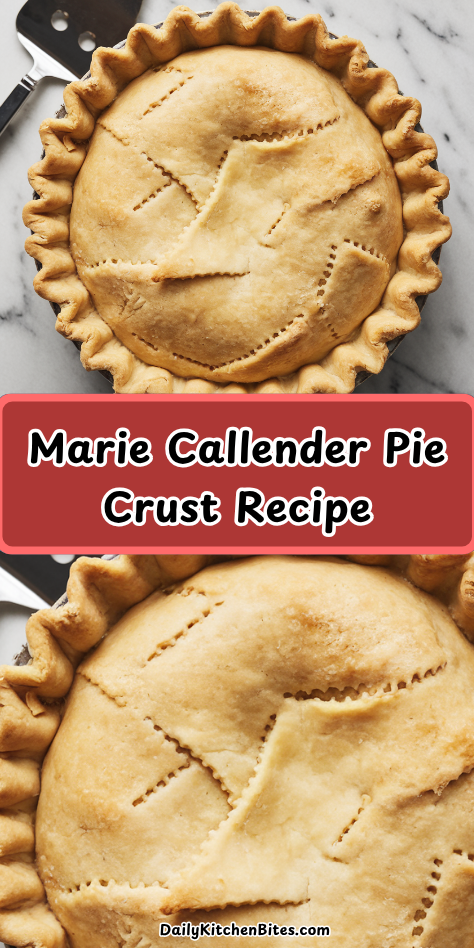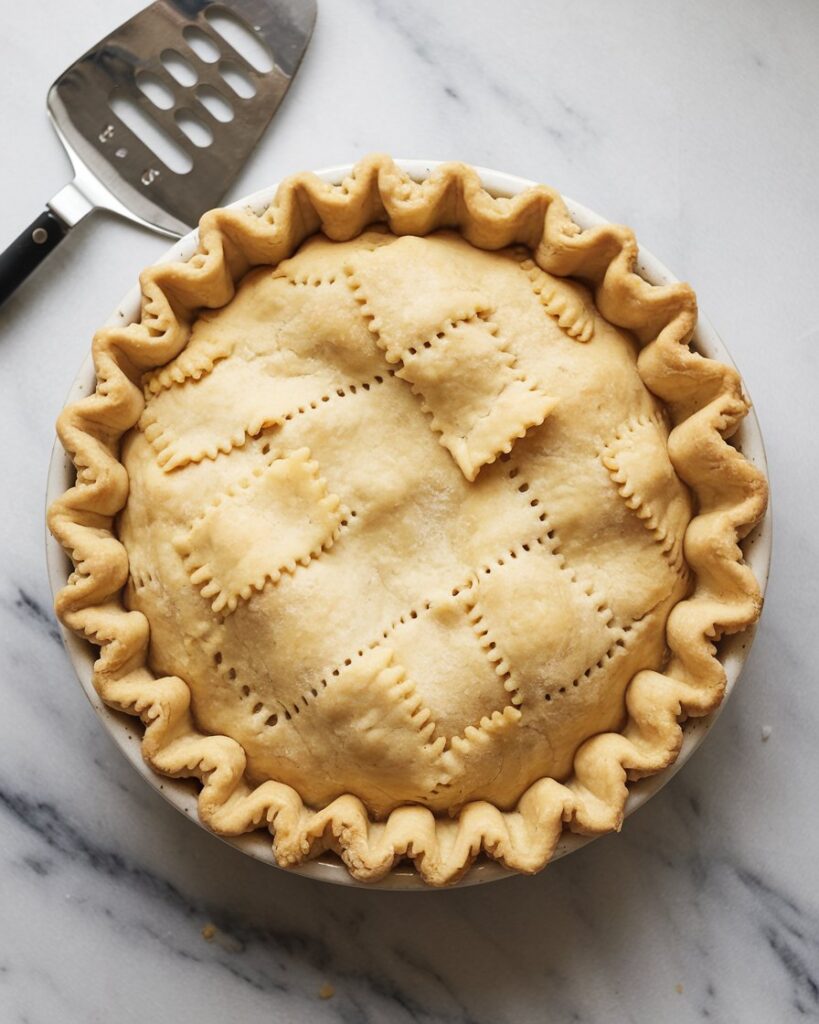There’s nothing quite like the buttery flake and tender bite of a perfectly made pie crust, especially one that tastes just like Marie Callender’s — golden, soft yet crisp, and melt-in-your-mouth delicious.
Whether you’re baking a classic apple pie, a silky chocolate cream, or a savory quiche, this homemade crust is the perfect foundation.
I grew up with Marie Callender pies on the holiday table — always the first thing to disappear.
After years of tinkering, this recipe comes incredibly close to that nostalgic flavor and texture: rich, buttery, tender, and easy enough for any home baker to master. Let’s roll up our sleeves and make something that tastes like home.
Why You’ll Love This Recipe
This pie crust is everything you want in a bakery-style base — flaky, tender, and buttery with just a hint of sweetness. It handles beautifully and bakes up with that signature golden edge you remember from Marie Callender pies.
Even if you’ve struggled with pie dough before, this recipe is foolproof with just a few key tips. It’s freezer-friendly, make-ahead approved, and versatile enough for both sweet and savory pies. Say goodbye to store-bought crusts forever!
What You’ll Need
- 2 ½ cups all-purpose flour
- 1 tbsp granulated sugar
- 1 tsp salt
- 1 cup (2 sticks) cold unsalted butter, cut into cubes
- 6–8 tbsp ice water
- 1 tbsp white vinegar (optional, for tenderness)
- Extra flour (for rolling)
Pro Tips
- Keep ingredients cold — especially the butter and water. Cold butter equals flaky layers.
- Don’t overmix — visible butter bits = more flake. Stop mixing when dough just comes together.
- Chill the dough — at least 1 hour before rolling helps prevent shrinking.
- Roll from the center out — rotate often for even thickness and shape.
- Freeze before baking — if blind baking, freeze the shaped crust 10 minutes first to avoid puffing.
Tools You’ll Need
- Large mixing bowl
- Pastry cutter or food processor
- Rolling pin
- Plastic wrap
- 9-inch pie dish
- Measuring cups and spoons
- Fork or pie weights (for blind baking)
Substitutions & Variations
- Gluten-Free: Use a 1:1 gluten-free baking flour plus 1 tsp xanthan gum.
- Dairy-Free: Substitute butter with plant-based butter or shortening.
- Savory Option: Omit sugar and add a pinch of herbs like thyme or black pepper for quiche.
- Whole Wheat Version: Use half whole wheat, half all-purpose flour for a nuttier flavor.
Make Ahead Tips
This dough can be made ahead and refrigerated for up to 3 days, or frozen (wrapped tightly) for up to 3 months.
Thaw overnight in the fridge before using. You can also freeze a shaped, unbaked pie shell for a quick pie night!
Instructions
1. Mix Dry Ingredients
In a large bowl, whisk together flour, sugar, and salt.
2. Cut in the Butter
Add cold butter cubes to the flour mixture. Use a pastry cutter (or your fingertips) to blend until the texture resembles coarse crumbs with pea-sized butter pieces.
3. Add Water & Form Dough
Drizzle in ice water and vinegar (if using), 1 tbsp at a time, mixing just until dough holds together. Divide dough in half, flatten into discs, wrap in plastic, and chill 1 hour.
4. Roll the Dough
On a floured surface, roll out one disc into a 12-inch circle. Transfer to pie dish and gently press into shape. Trim and crimp the edges.
5. Chill Again
Chill the shaped crust in the fridge for 20 minutes or freezer for 10 minutes before baking. This step helps prevent shrinking.
6. Bake or Blind Bake
For a pre-baked crust: Preheat oven to 375°F. Line crust with parchment and fill with pie weights or dried beans. Bake 15 minutes, remove weights, and bake 10 more minutes until lightly golden.
Leftovers & Storage
Wrap leftover dough tightly in plastic and refrigerate up to 3 days or freeze for later use. If you’ve baked the crust, store at room temperature up to 24 hours or freeze it (unfilled) for up to 2 months. Always wrap tightly to keep it crisp.
Recipe FAQs
1. Why does my pie crust shrink or slump in the oven?
It likely wasn’t chilled before baking or wasn’t pressed firmly into the dish. Chill the dough after shaping, and don’t stretch it into the pan.
2. Can I use salted butter?
Yes, just reduce added salt to ½ tsp to balance the flavor.
3. What’s the vinegar for?
A touch of vinegar helps tenderize the dough and prevent gluten overdevelopment, leading to a softer, flakier crust.
4. Can I make this in a food processor?
Absolutely! Just pulse the dry ingredients, add butter, pulse again, then drizzle in water until dough forms.
The Final Crumb
A perfect pie starts with a perfect crust, and this Marie Callender–inspired recipe gives you just that: flaky, tender, buttery goodness in every bite. It’s the kind of crust that turns a good pie into a memorable one.
Whether you’re filling it with fruit, custard, or comfort food classics, this pie dough will be your new go-to. I’d love to hear what you bake with it — leave a comment and share your pie story!


